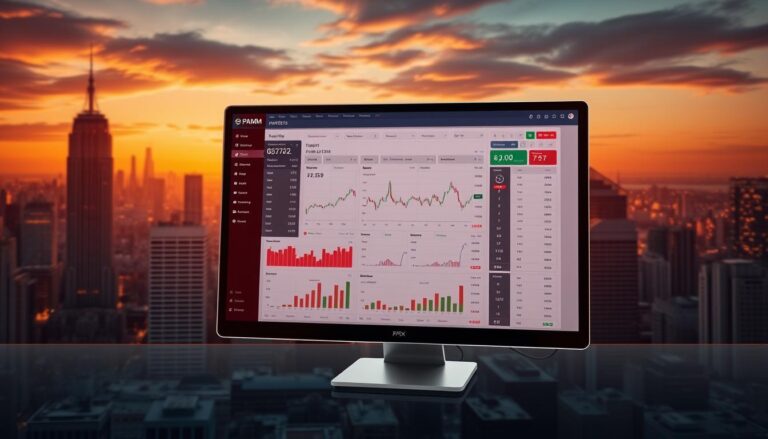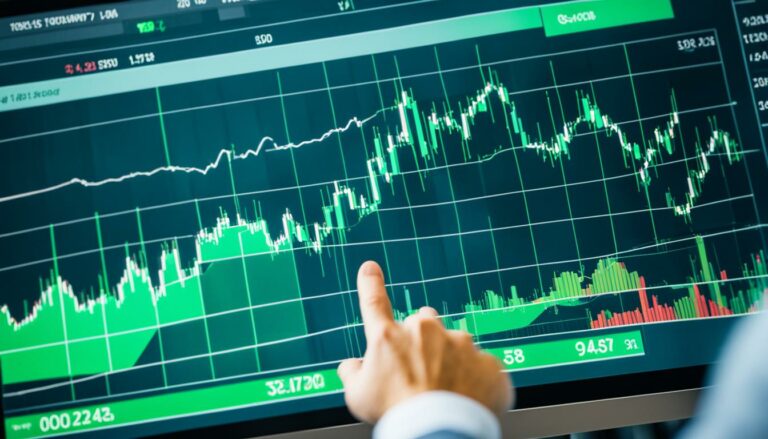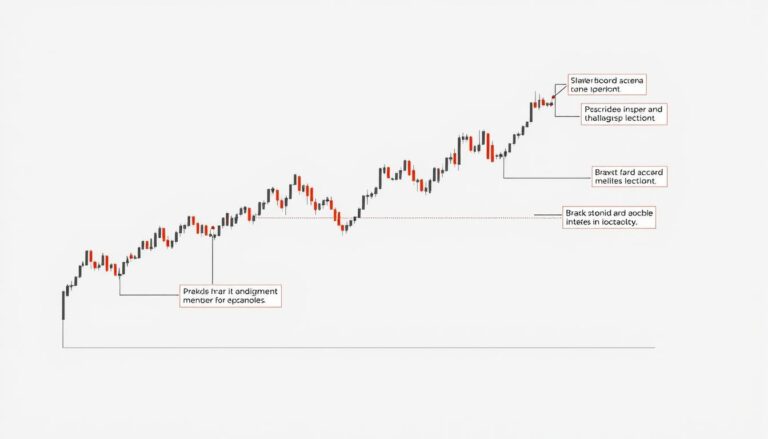Forex Market Manipulation: What You Need to Know.
Imagine waking up with a new trading plan, only to see the forex market acting weird. Yesterday, it looked promising, but today, prices are all over the place. You’re left confused and doubting your choices.
**Is it just market ups and downs, or is something more going on?** This is a common problem for forex traders. Forex market manipulation can really affect prices, putting traders at risk.
**The forex market is huge, with about $5 trillion traded daily.** Not everyone follows the rules. Big players like banks and market makers use tricks like front-running and stop-loss hunting to make more money. Even with rules, these tricks can still harm your trading.
Learning about forex manipulation helps you deal with these issues. It’s a journey to understand how it affects your trading. Let’s dive into the key points of forex manipulation and its impact on your trading.
What is Forex Market Manipulation?
Forex market manipulation is when people try to change currency prices for their own benefit. This can be done in unfair ways. Knowing what market manipulation is helps spot these unfair actions.
Definition and Overview
The definition of market manipulation in forex means using tricks to change how people see a currency’s value. Even though the forex market is big and fast, it can still be affected by these tricks. Big banks and investors have been caught changing the market in the past.
They would place big orders just before the market was fixed to make more money. This shows how the forex market can be tricked.
Common Misconceptions
Some think the forex market is too big to be manipulated. But this is not true. Banks have been punished for manipulating the market.
There are also false beliefs about currency manipulation. Political issues can make people think one way or another about it. For example, in August 2019, the U.S. said China was manipulating its currency. This shows how tricky it can be to decide if someone is manipulating the market.
The U.S. Treasury’s yearly report on foreign exchange policies shows they keep watching these actions closely.
Key Players in the Forex Market

The forex market is full of life, thanks to different key players. Each one affects trading in its own way. Knowing about these players helps us understand how the market works, especially with market makers, institutional traders, and retail traders.
Role of Market Makers
Market makers are very important in the forex market. They make it easier to trade by setting prices. Their big trading amounts help keep prices stable, making it easier for everyone to trade.
But, this power can be a problem for smaller traders. It’s hard for them to compete with the big guys.
Influence of Institutional Traders
Institutional traders are the heart of the forex market. They include big names like banks and hedge funds. They do a huge amount of trading, over $6.6 trillion in 2019.
These big players use advanced tools and strategies. They can change prices quickly and also shape long-term trends.
Retail Traders and Their Vulnerability
Retail traders are a small part of the market. They only do about $201 million in April 2019. This small role makes them vulnerable to manipulation by bigger players.
They don’t have the same resources as the big guys. So, they need to be careful and learn a lot to succeed in the forex market.
Forex Market Manipulation Techniques
It’s key to know about the different ways to manipulate the forex market. These methods can change the market and impact your trading plans. Here, we’ll look at important techniques like stop-loss hunting, front-running, and spread manipulation.
Stop-Loss Hunting Explained
Stop-loss hunting is when market makers push prices to make traders sell. This leads to a big drop in prices. It can trick many traders into bad trades.
Front-Running Tactics
Front-running means brokers trade based on knowing about future deals. It’s unfair and illegal. It breaks trust in the trading world.
Spread Manipulation Strategies
Brokers might widen the price gap between buying and selling. This helps them make more money but hurts traders. It can also make prices seem more volatile than they are.
Painting the Tape and Banging the Close
Painting the tape makes it seem like there’s more trading than there is. Banging the close means buying or selling just before the market closes. Both tricks make the market seem different than it really is.
Forex Market Manipulation Examples

The forex market has seen its share of manipulation examples. These show how some traders use unfair methods to make money. Events from the past and recent claims show the ongoing problems in this market.
Historical Scandals and Regulatory Actions
Big financial institutions have faced big scrutiny for forex market manipulation. The LIBOR scandal showed banks working together to set interest rates unfairly. This led to big fines from regulators.
The Hunt brothers’ attempt to control the silver market is another example. It shows how a few can greatly affect prices. These scandals have led to stricter rules to keep the market fair.
Recent Cases of Allegations
In recent years, there have been more trading scandals. Traders have used lies and false info to change currency values. They use pump and dump schemes to make money, leaving others to lose.
Regulators are working to stop these new tricks. They aim to keep the forex market stable.
Impact of High-Frequency Trading
High-frequency trading has made forex manipulation more complex. Algorithms can quickly spot and use market gaps. This can lead to fast price changes that might be unfair.
Traders use spoofing to trick others. They place big orders that they cancel later. This makes it hard to tell real trading from manipulation. It’s causing regulators to look closely at trading technology.
| Manipulation Technique | Description | Potential Impact |
|---|---|---|
| Pump and Dump | Inflating an asset’s price using misleading information | Losses for unsuspecting retail investors |
| Spoofing | Placing orders with no intention to execute to mislead other traders | Distorted market signals |
| Wash Trading | Executing trades to create artificial volume | False impression of market activity |
| Cornering the Market | Gaining control of a majority of an asset | Price manipulation affecting long-term investors |
| Stop Hunting | Targeting stop-loss orders to fill liquidity needs | Adverse impacts on technical analysis |
How to Detect Forex Manipulation

Finding out if forex is being manipulated can be hard. But, spotting market abuse indicators helps a lot. Look out for odd price moves and big spread differences. Here’s how to spot forex manipulation, understand unusual price changes, and use tools to help.
Indicators of Market Abuse
There are signs that show forex might be manipulated:
- Spoofing: Traders fake big orders to trick the market.
- Pump and Dump: People make a currency seem valuable, then sell it for a profit.
- Front-Running: Brokers use secret info to make money before clients.
- Stop Hunting: Brokers make clients lose money by triggering stop-loss orders.
- Unusual Price Movements: Big price changes, especially when it’s quiet, might mean trouble.
- Abnormal Trading Volume: When trading volume goes up without reason, it’s a warning.
Recognizing Unusual Price Movements
Watching for odd price changes is key. Big price jumps or drops, especially around big news or when it’s quiet, are signs. Keep an eye on price trends to catch these oddities.
Tools and Resources For Monitoring
There are tools and resources to help spot manipulation:
- Actimize: A tool for finding FX manipulation and fraud, covering many markets.
- Market Visualization Tools: Help see market activity and firm transactions together.
- Data Visualization: Finds big trading pattern irregularities.
- Detection and Research Tool (DART): Makes it easy to gather and review data for analysis.
The forex market is complex, open 24/7 with little regulation. It’s vital to watch it closely everywhere. Using advanced tools helps check transactions carefully. This helps you understand how to spot forex manipulation well.
| Indicator | Significance |
|---|---|
| Spoofing | Creates false supply/demand signals, distorting market perception. |
| Pump and Dump | Involves price inflation for profit at the expense of other traders. |
| Front-Running | Exploiting insider knowledge for personal gain. |
| Stop Hunting | Platforms triggering stops to create false volatility. |
| Unusual Price Movements | Alerts to possible manipulation, particularly in low volume. |
| Abnormal Trading Volume | Indicates potential organized activity, possibly manipulative. |
Regulatory Landscape for Forex Trading

The forex trading world is ruled by strict laws and rules. These rules help keep the market fair and safe for everyone. Knowing these rules and who makes them can really help your trading.
The Role of Financial Regulations
Financial rules are key in the forex market. They fight fraud, make things clear, and help everyone compete fairly. Brokers must follow rules like keeping client money separate and checking who their clients are.
Key Regulatory Bodies in Forex Trading
Many important groups watch over forex trading worldwide. These include:
- United States: Commodity Futures Trading Commission (CFTC) and National Futures Association (NFA)
- United Kingdom: Financial Conduct Authority (FCA)
- Australia: Australian Securities and Investments Commission (ASIC)
- Cyprus: Cyprus Securities and Exchange Commission (CySEC)
- European Union: European Commission’s MiFID II regulations
- Asia: Monetary Authority of Singapore, Financial Services Agency (Japan), Hong Kong Monetary Authority, Financial Markets Authority (New Zealand)
- South Africa: Financial Sector Conduct Authority (FSCA)
- Nigeria: Central Bank of Nigeria (CBN)
These groups are key in making sure everyone follows the rules. They help keep the market honest and safe for investors.
Important Laws Against Market Manipulation
Laws against market tricks are very important. In 2015, big banks like JPMorgan Chase and Citigroup got in big trouble for cheating. These laws help keep the market fair and trustworthy.
| Regulatory Body | Region | Key Responsibilities |
|---|---|---|
| CFTC | United States | Regulates futures and options markets, ensures market integrity |
| FCA | United Kingdom | Responsible for monitoring compliance, protecting consumer rights |
| ASIC | Australia | Licenses brokers, conducts regular audits |
| CySEC | Cyprus | Regulates financial markets, ensures transparency |
| MiFID II | European Union | Creates a harmonized regulatory environment for investment services |
Strategies to Protect Yourself from Forex Manipulation

In the world of forex trading, keeping safe from scams is key. Learning strategies to protect yourself can lower your risk. Being smart in your trading can lead to better results.
Choosing the Right Broker
Finding a good broker is very important. Look for ones regulated by the UAE’s SCA or the DFSA in Dubai. Make sure they follow strict rules, like those in Federal Law No. (4) of 2000. This helps avoid scams and bad practices.
Understanding Market Fundamentals
Knowing the basics of the market is crucial. Learn about economic signs, who’s in the market, and what moves currencies. This knowledge helps you avoid scams and make better choices.
Using Multiple Accounts for Price Comparison
Having accounts with different brokers can help you see price trends clearly. By comparing prices, you can spot if something’s off. This strategy to protect yourself is great for catching scams in fast-changing markets.
| Strategy | Description |
|---|---|
| Choosing a Regulated Broker | Select brokers compliant with regulatory bodies like SCA or DFSA. |
| Understanding Market Fundamentals | Gain knowledge of economic indicators and market dynamics. |
| Using Multiple Accounts | Compare prices across different platforms to spot manipulation. |
Ethics in Forex Trading
Ethics are key in forex trading. Knowing the value of trading ethics helps you act right. This way, you protect your money and help the market stay honest.
Importance of Trading Ethics
Trading ethics keep the market fair. By following the rules, traders avoid bad practices. This keeps your money safe and helps the whole financial system.
Being open and honest in trading builds trust. It makes the market a better place for everyone.
Whistleblower Allegations in Forex Practices
Whistleblowers play a big role in stopping bad behavior in forex. Big cases show how important it is to follow the rules. For example, in 2014, five big banks got fined $3.4 billion for cheating in the forex market.
This shows we need a watchful eye in trading. We should all be ready to speak up if we see something wrong.
Learning about trading ethics helps you understand the market better. By following the rules, you help keep the trading world honest. This protects you and others in the market.
| Year | Fine Amount (Billions) | Banking Groups Involved |
|---|---|---|
| 2014 | $3.4 | UBS, JPMorgan, Citigroup, RBS, HSBC |
| 2015 | $6 | UBS, JPMorgan, Citigroup, RBS, HSBC |
Forex Market Manipulation: What You Can Do
The Forex market is huge, with over $5.3 trillion traded daily. To avoid manipulation, learn about signs and techniques used by some players. This knowledge helps you make better trading choices and stay safe.
When trading, use different strategies that fit your risk level and knowledge. Tools and tech help you spot unusual price changes that might show manipulation. With over 30 traders suspended for manipulation, being careful is key.
Creating a strong trading plan is crucial for avoiding risks. Keep learning and watch your broker’s actions closely. Stay alert and use your knowledge to protect your investments and succeed in trading.





